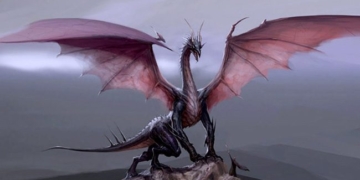A rare turtle species in Hong Kong—featuring a beak resembling that of an eagle, a tail like a crocodile, and an oversized head—along with several other endangered turtle species, may soon disappear forever due to illegal hunting.
Sung Yik-hei, an associate professor at Lingnan University, stated: “Hong Kong is one of the last bastions for turtle conservation in Asia.” He has been monitoring the turtle population in the city for over a decade and estimates that this population has declined by 60% to 80% during that time.
“The situation has become as bad as it can get,” he said.
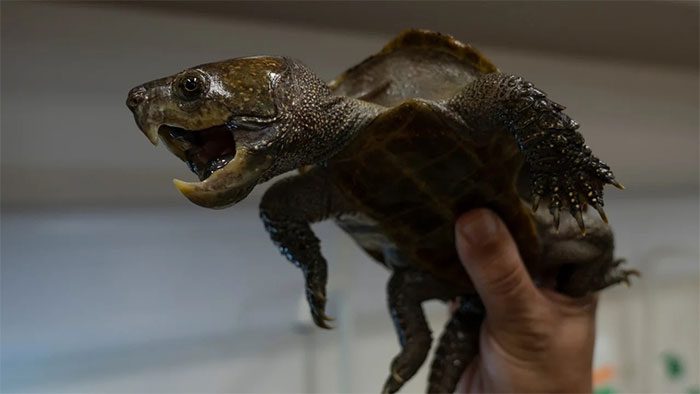
A big-headed turtle in the laboratory at Lingnan University in Hong Kong. (Photo: CNN).
Exploding Black Market
The rural outskirts of Hong Kong, with its subtropical climate, numerous rivers, and sparse population, serve as a habitat for various freshwater turtle species.
Many turtle species here were once abundant in other parts of Asia, such as Vietnam, Thailand, Taiwan, and mainland China, but poaching has severely depleted their populations to the point that some species now have only a few hundred individuals left and are primarily found only in Hong Kong, according to CNN.
“In all the streams I visited recently, we observed signs of illegal turtle hunting. We found traps or did not find any turtles in areas we were sure they inhabited.”
Among the turtle populations he is striving to conserve is the golden turtle (also known as the three-striped box turtle), a species once prized for its medicinal significance. This turtle has now become a sought-after pet, fetching prices of up to hundreds of thousands of USD, as many believe the golden stripes on its head symbolize prosperity.
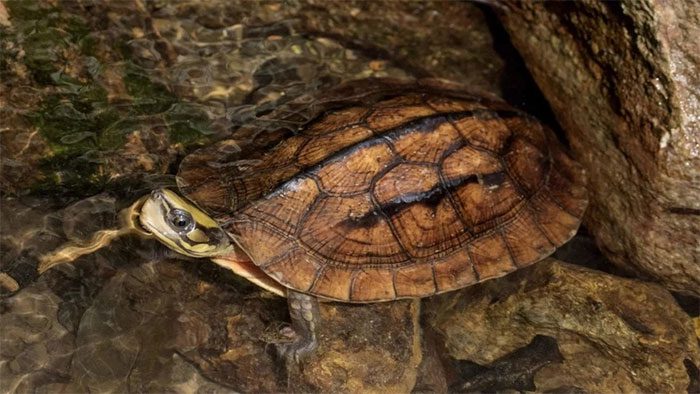
Golden turtles can be sold for up to hundreds of thousands of USD in the Hong Kong black market. (Photo: Sung Yik-hei).
Mr. Sung estimates that there are about 100 golden turtles left in Hong Kong, one of the last significant populations of this species in the world.
Facing a similar plight is the Beale’s eyed turtle (Sacalia bealei), which has fewer than 200 individuals remaining in Hong Kong and an unspecified number—believed to be very small—on mainland China.
This turtle features a pattern resembling two eyes on the back of its head. Its unique appearance makes it a notable commodity, with prices reaching hundreds of USD on the black market.
Also among the most endangered species is the big-headed turtle. With a beak like an eagle, a tail resembling a crocodile, and an oversized head, this peculiar turtle has become popular among those seeking exotic pets.
This species now has only a few hundred individuals left in Hong Kong, with its populations in Cambodia, Myanmar, Thailand, and Vietnam possibly even smaller. They are sold for up to 1,000 USD on the black market.
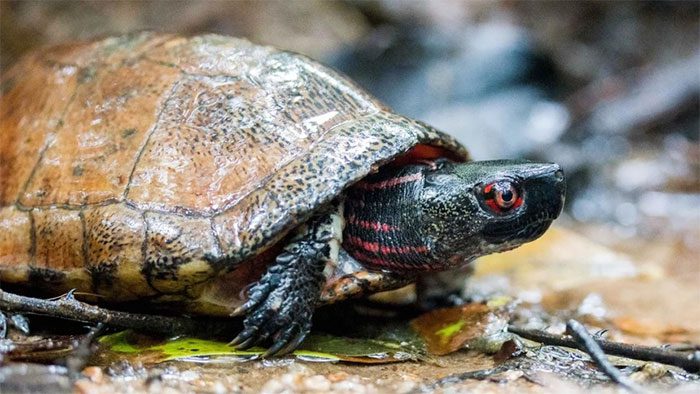
Beale’s eyed turtles have fewer than 200 individuals remaining in Hong Kong. (Photo: Sung Yik-hei).
Insufficient Laws to Deter Poaching
None of the three turtle species mentioned are deemed suitable for keeping as pets. Mr. Sung noted that the big-headed turtle is particularly unsuitable, as it is very difficult to create a captive environment that mimics its natural habitat.
Additionally, according to Hong Kong law, the trafficking or keeping of endangered turtle species is classified as a criminal offense, punishable by up to 10 years in prison and a fine of up to 10 million HKD (1.27 million USD), depending on the species.
However, illegal turtle trafficking in the city remains vibrant, alongside legal import activities.
Citing public data, the ADM Capital Foundation, a private research agency based in Hong Kong, reported that the city authorities have seized at least 17,900 live turtles from traffickers since 2015.
Bowie Chan Wing-wai, 41, who runs the Facebook page Hong Kong Reptile Channel, stated that keeping turtles and small reptiles has become very popular in the city. Many Hong Kong residents live in cramped spaces and believe that these animals can be kept in small enclosures, such as tubs or small aquariums at home.
However, this perception is misguided because in addition to space, other environmental factors—such as sunlight—also significantly affect their health.
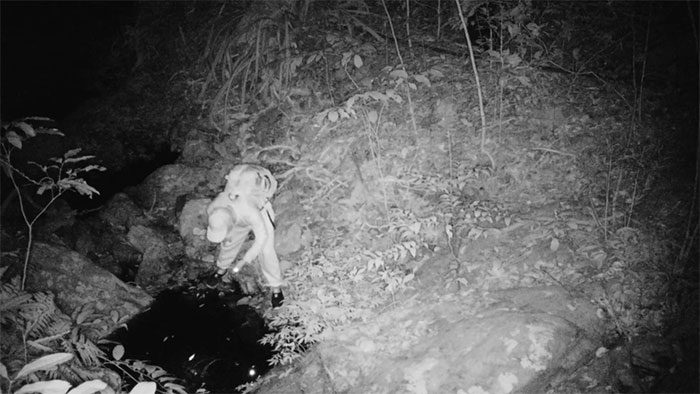
A suspected turtle poacher. (Photo: Sung Yik-hei).
Sam Inglis, the wildlife program director at ADM, noted that export records show that only a few hundred of the 4.3 million turtles imported from 2015 to 2022 were re-exported legally. Most remain in the city, die, are consumed, or are illegally smuggled out of Hong Kong.
The Agriculture, Fisheries and Conservation Department of Hong Kong (AFCD) told CNN that they are “spending considerable effort to combat illegal hunting to protect wildlife.” They have been working with the police and local animal protection groups to monitor nesting areas and remove traps.
This agency reported that it has successfully prosecuted 24 of 47 wildlife poaching cases detected since 2020. During the same period, it successfully prosecuted 4 of 38 cases related to the illegal trade of endangered freshwater turtles.
However, poachers remain undeterred. They often operate at night and frequently carry weapons.
Mr. Sung took CNN to two locations where his cameras malfunctioned. He believes this was due to interference from poachers.

















































